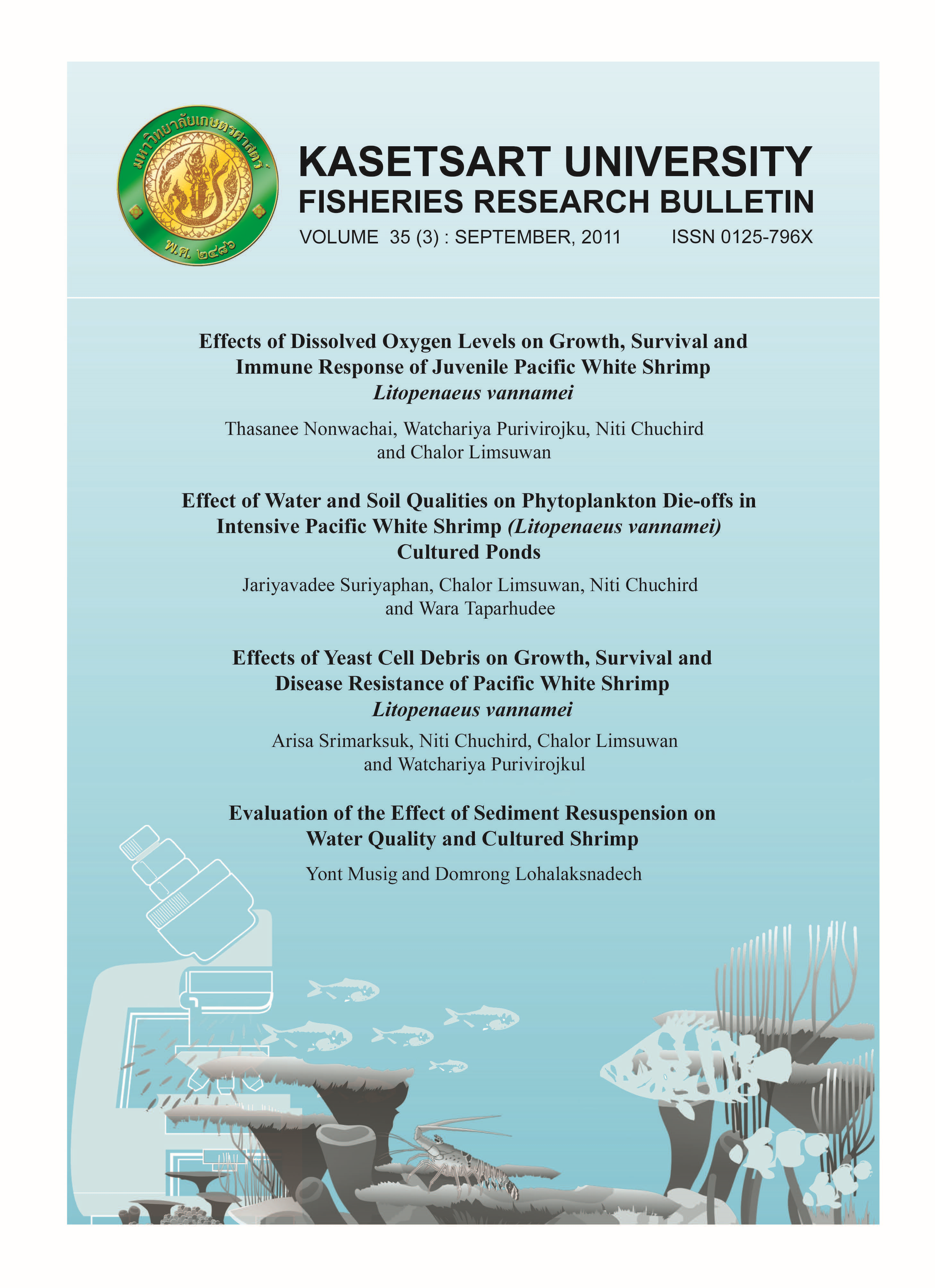Effects of Dissolved Oxygen Levels on Growth, Survival and Immune Response of Juvenile Pacific White Shrimp Litopenaeus vannamei
Main Article Content
Abstract
A study on the effects of dissolved oxygen (DO) levels on growth, survival and immune response of Pacific white shrimp (Litopenaeus vannamei) was conducted under laboratory conditions. Two hundred seventy shrimp (6-8 g) were stocked into 9 (500-liter) tanks at a density of 30 shrimp/tank. Tests were carried out at three DO levels, namely > 4 ppm (group A), 2 - 4 ppm (group B), and < 2 ppm (group C) with three replicates/treatment. Shrimp were fed with a commercial feed four times daily for 60 days. Water salinity was maintained at 25 ppt throughout the experimental period. After 60 days, group A shrimp had an average body weight of (28.16 + 2.77 g), which is significantly higher (P<0.05) than group B shrimp (25.01 + 1.81g) and group C shrimp (25.90 + 2.51 g). Survival rates of shrimp reared in groups A and B ranged from 81.11 to 92.22%, which was significantly higher (P<0.05) than that in group C (56.67%). Immune parameters, including total hemocyte count, percentage phagocytosis, bactericidal activity, phenoloxidase activity and superoxide dismutase activity were significantly higher (P<0.05) in groups A and B than in group C. Shrimp in groups A and B had bactericidal activity at the serum dilution of 1:8 while those in group C had bactericidal activity at a dilution of 1:4. Shrimp in group A had the highest survival rate after an experimental injection of Vibrio harveyi but it was not significantly different (p>0.05) from shrimp in group B.


